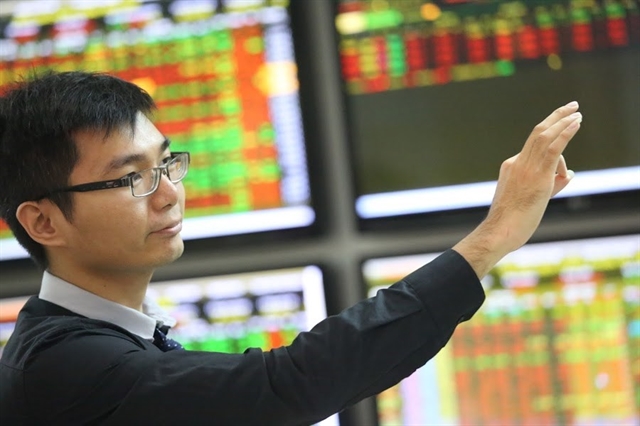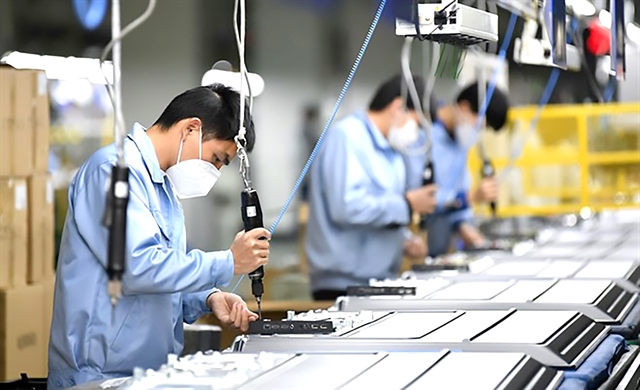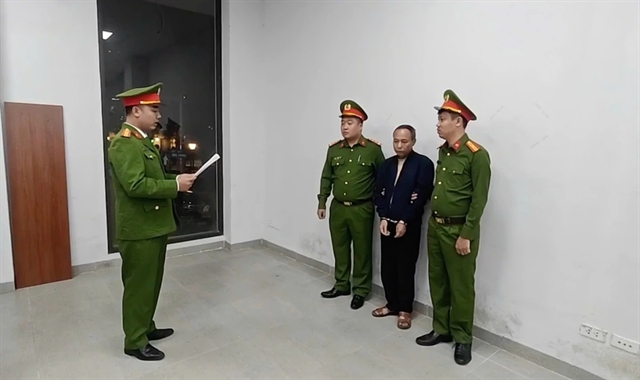 Economy
Economy


|
| HCM City enterprises pioneer robotic farming solutions for a smarter agriculture future. –Photo baodautu.vn |
HCM CITY — As Việt Nam’s largest economic hub, HCM City is undergoing a profound transformation of its growth model, steering firmly towards green industry and a circular economy.
This period marks what many experts describe as a “golden time” for the city to accelerate its modern, innovative and sustainable industrial development – particularly in the context of regional integration after the recent administrative merger.
According to the city’s Department of Industry and Trade, the city currently hosts more than 1,600 active foreign direct investment (FDI) projects, with total registered capital exceeding US$56 billion.
The city remains Việt Nam’s foremost centre of industry, commerce and services.
Its goal is to ensure that by 2030, high-tech industries will account for over 70 per cent of industrial production value, and by 2045, to become one of Southeast Asia’s leading innovation hubs.
The city’s industrial performance over the first ten months of 2025 has been encouraging. The industrial production index (IPI) rose 7.5 per cent year-on-year, indicating that the manufacturing sector is maintaining strong momentum and contributing significantly to fourth-quarter GRDP growth.
This positive trend underscores the city’s continuing role as a key driver of the national economy.
Among its four key industrial sectors, mechanical engineering has been a standout performer, recording an 18.3 per cent increase in the first ten months of 2025 compared with the same period last year – one of the highest growth rates in the sector. Pharmaceuticals, rubber and plastics grew by 13.4 per cent; food, beverages and agricultural processing rose by 8.3 per cent; while electronics and information technology expanded by 6.5 per cent.
Together, these sectors have contributed significantly to the city’s overall industrial rebound.
Looking ahead to the final months of 2025, the outlook remains positive.
Domestic consumption continues to recover steadily, and industrial enterprises are showing greater dynamism in production and market expansion.
The Department of Industry and Trade expects local businesses to enhance competitiveness, diversify partnerships, and actively integrate into global supply chains, reinforcing the role of the private sector as a key growth engine.
Expanding scale and new momentum
Hà Văn Út, deputy director of the Department of Industry and Trade, said the recent administrative merger created a broader development space for the city, bringing together localities with distinct advantages and resources.
This, he noted, ushered in a new phase of multidimensional growth, positioning the city for sustainable breakthroughs. “Industry will continue to be the crucial driver of the city’s economic development,” Út affirmed.
He also emphasised that along with policy mechanisms, trade fairs and industrial exhibitions would be vital channels for promoting the city’s manufacturing ecosystem.
These events would provide platforms for businesses to strengthen supply chains, exchange technology, and build partnerships that contribute to a resilient and sustainable industrial support network.
Moreover, closer regional cooperation within the expanded city territory would form a unified economic space that not only amplifies growth momentum but also reinforces HCM City’s position as Việt Nam’s economic locomotive.
Innovation as the foundation of transformation
From a corporate perspective, Dr. Khương Anh Dũng, deputy director of Strategic Programme Management at Bosch Global Software Technologies, noted that Việt Nam’s digital transformation and innovation ecosystem should be anchored in coherent policies and actionable commitments.
“Not only key industries need creative ecosystems,” he explained, “but also emerging sectors such as AI, data centres, and high-tech exports. Each requires technological solutions and supportive policy frameworks to realise the long-term vision.”
Dũng pointed to several promising developments in high-tech exports. “Recently, CT Group secured an order to export 100 million semiconductor chips to a South Korean partner – a milestone for Việt Nam’s nascent chip industry. Meanwhile, Realtime Robotics (HERA) successfully exported unmanned aerial vehicles to the US,” he said.
“These are clear signs that Việt Nam is moving up the global value chain.”
He added that future industrial strategies should prioritise semiconductor materials, microchip design, and packaging technologies for the Industry and Trade and Science and Technology sectors, while the Information and Communications sector should focus on AI platforms, data infrastructure, and cloud computing.

|
| HCM City enhances human resource development for supporting industry manufacturing. – Photo laodong.vn |
Smart, sustainable, and people-centred development
Associate Professor Trịnh Tú Anh, director of the Institute for Smart Urban Management under the University of Economics HCM City (UEH), argued that the city’s vision of a sustainable smart metropolis must rest on several interconnected pillars – economy, mobility, governance, environment, people and quality of life.
“Urban intelligence is not merely about digital infrastructure investment,” she said, “but about creating an open innovation ecosystem where government, businesses and citizens co-design and co-evaluate policies.”
As the city expands its geographical boundaries and moves towards becoming a mega-city, regional coordination and inter-urban connectivity would be increasingly vital.
Anh stressed that the city’s smart development strategy should avoid one-dimensional growth, instead promoting balanced and inclusive progress across its newly merged zones.
She added that developing smart urban systems would be an inevitable trend, and the city was at the forefront of Việt Nam’s efforts to build a citizen-centred digital government.
“From practical experience, the city should establish co-creation platforms that integrate infrastructure, data and planning,” she said.
“At the same time, it must respect the unique characteristics of each locality within the new administrative boundaries to maximise synergy and maintain its role as the country’s leading centre for industry, trade and services.”
With its strong industrial base, expanding innovation ecosystem, and strategic policy orientation, the city stands at the threshold of a historic transformation.
This “golden time” presents not only an opportunity for economic renewal but also a chance for the city to lead Việt Nam into a new era of high-tech, sustainable and inclusive industrial development. – VNS




